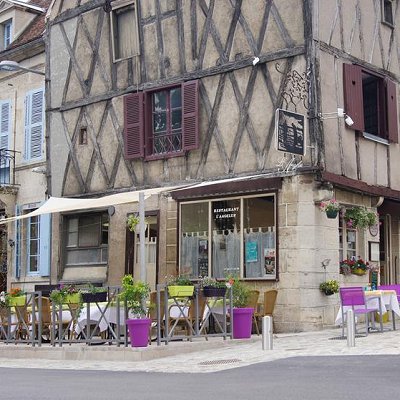
Like us on Facebook
PLACE NAMES


 
|
|
Clamecy
|

|
|
The earliest literary mention under the name of Clamiciacus, a possession of the bishops of Auxerre, is in the bequest by Pallade, Bishop of Auxerre, in 634, founding an abbey in the suburbs of Auxerre, dedicated to the Virgin, Saint Andrew and Saint Julien, martyr, and supported by lands in Clamiciacus and other places.
Clamecy continued to belong to the abbey of St Julian at Auxerre until the eleventh century, when it passed to the counts of Nevers and of Auxerre, one of whom, Hervé, enfranchised the inhabitants in 1213.
The crusading Count William IV of Nevers promised the bishop of Bethlehem that if Bethlehem should ever fall, he would welcome him in Clamecy. After the capture of Jerusalem by Saladin in 1188, the bequest of the now deceased count was honoured and the Bishop of Bethlehem duly took up residence in the hospital of Panthenor, Clamecy, which remained the continuous (if somewhat idiosyncratic) seat of the Bishopric of Bethlehem until the French Revolution.
The town was sacked and substantially rebuilt in the 14th century during the Hundred Years' War.
Clamecy enjoyed great prosperity thanks to the development, by Jean Rouvet, of the 'Flottage du bois', by which timber from the immense forests of the Morvan national park were processed and floated down river to Paris. The 'Flottage' which started in the 16th century continued until the beginning of the 20th century (the last floating 'log train' left Clamecy in 1923).
There is also an interesting hereditary link between Jean de Clamecy (later to become John II, Count of Nevers) and Henry VIII of England, via Jean de Clamecy's daughter, Elizabeth of Nevers, who married John I, Duke of Cleves and was consequently Anne of Cleves great grandmother.
Sights
- The medieval centre of Clamecy has been classed by the French government as a "Secteur Sauvegardé" (protected sector) in entirety; the only such protected area in the whole of the department of the Nievre.
- The town has evolved in the typical concentric French manner, with a town centre consisting of 13th to sixteenth-century houses (still remarkably intact), surrounded by nineteenth-century houses and buildings with 20th-century developments forming an outer ring.
- Its principal building is the church of St Martin which dates chiefly from the 13th, 14th and 15th centuries. The tower and façade are of the 16th century. The chevet, which is surrounded by an aisle, is rectangular - a feature found in few French churches. After a period of neglect following the French revolution, the church underwent significant restoration under the auspices of Eugène Viollet-le-Duc and was classified as a historic monument in 1840.
- Of the old castle of the counts of Nevers (site now occupied by the 19th century Mairie), only the vaulted cellars remain. A church in the suburb of Bethlêem (Bethlehem), dating from the 12th and 13th centuries, now serves as part of an hotel.
 Feel free to Email me any additions or corrections Feel free to Email me any additions or corrections
LINKS AVAILABLE TO YOUR SITE
| | |





